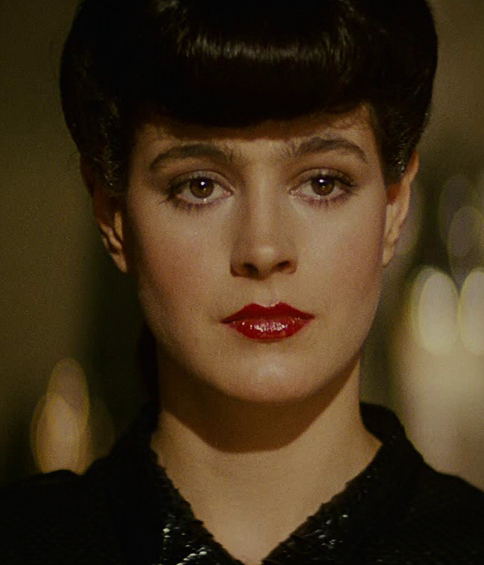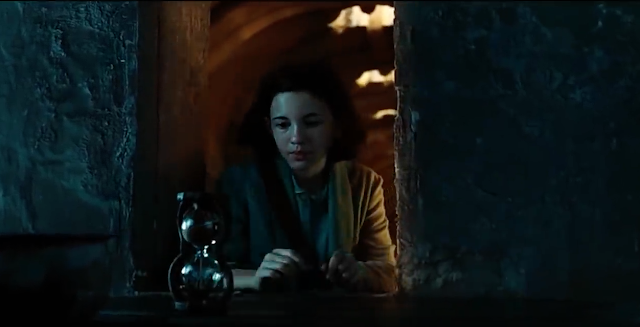"Blade Runner" and "The Lady From Shanghai"
"The director is always the most important influence on a film"
In both cases the directors of "Blade Runner" and "The Lady from Shanghai" were very important influences on the film, Scott and Welles had their own creative ideas behind the films that was particular to their styles. Scott brought personal influences to "Blade Runner" in the constant rain, that was reminiscent of his home area of the North of England, this is important to Scott as the main reason he chose to direct the film was because he was inspired by the story and the way he could see his deceased brother coming through. The decision to include rainy sequences adds to the picturesque dystopian imagery that whilst beautiful, is dark and dirty, this is part of Scott's auteur style and thus proves that he was a major influence on the film. As well as the picturesque Mise-en-scene, which is important to Scott because of his time at college studying art, he also has a strong heroine, in Rachael, his femme fatale, he was so involved with the aesthetics of the film that he painted Sean Young's lips personally, this shows that Scott tried to be important in as many aspects of the film as possible because as an auteur he wanted complete control over what he saw as his film. Welles also used parts of his auteur style in "The Lady from Shanghai", at the beginning of the film we are shown a long tracking shot of Welles and Hayworth, as he walks her to her car. This tells us that Welles pushed his influences on the film because he was known for adventurous long shot sequences, most famously, the opening shot of "Touch of Evil", another long tracking shot. Welles believed heavily in the auteur theory and in fact said that filmmakers should “create your own visual style ... Let it be unique to you yet identifiable for others”. This proves that at least Welles thought that the director was a very important influence on the film and that they should probably be given full artistic licence. He also was allowed to cast his, soon to be ex-, wife in the lead role and himself as the protagonist, meaning that he had a lot of control over how the leads were acting and also cast many of his previous colleagues, from his theatre company in supporting roles. This differs to Scott who blindly cast Hauer without having met him, he also gave Hauer artistic licence to create his own death speech. Scott had difficulty in casting Deckard because the writer wanted Robert Mitchum and Scott wanted Dustin Hoffman, who declined on creative differences, in the end Scott settled for Ford because of the “Star Wars” films and Ford’s own interest in the plot. This shows that Scott couldn’t always get his own way on the set of “Blade Runner” affirming that the director isn’t the only influence.
However, it wasn’t only Scott who had production issues in his film, Welles and Scott were both fired from their respective films at the editing stage so that the companies, Columbia and Warner Bros respectively, could salvage what they saw as a slightly profitable film from a train wreck. Welles was excluded because his style didn’t fit in with those at Columbia pictures especially Larry Cohn, who got very annoyed when Welles not only took all of the crew and heavy cameras across the world to exotic locations, but also dyed Hayworth’s famous ginger hair blonde. Scott was excluded because in his contract it stated that if the film went over 2 hours that Warner Bros could seize the film for editing because the company believed that no-one would want to sit through a film that long. Both production companies went against the directors visions when editing, Welles' film was butchered into a very hard to follow film with random close ups of Hayworth, the star that sold the film, as well as this the intricate soundtrack that was planned out by Welles was scrapped and replaced by a repetitive simple song that Hayworth got to sing during the boat scene. Thankfully they left the hall of mirrors scene in tact a scene that has been referenced intertextually in many later films, including “John Wick 2” and “The Man with the Golden Gun”. Scott’s film, apparently being too long was mercilessly cut and a voice over was added to “make sense” of the film for audiences. The unicorn sequence was cut, attacking Scott’s vision of the film and his auteur style. The voice over took away from the beauty of the shots as your attention as an active audience member switches to the narration, adding unnecessary exposition to an interesting film the opening scene with Deckard has a completely different tone when you are able to hear Ford’s voice over the top. Another reason for the film being taken out of Scott’s hands was because the crew were complaining about the terrible conditions that they had to work under.
I don’t think it’s fair to say that because of the many production issues on both films that either Scott or Welles were not the main influence on the films because they enacted their own unique style to create their films. The films were altered majorly in the editing process and therefore it is unfair not to acknowledge the companies as another key influence on the directors' films. I believe in the auteur theory because the directors’ vision for the film is often more important than the fact it was written by a different person and based on a novel by another person all together, true for both of the films. The fact that it is easy to recognise certain directors' work just by the look proves that they are the main influence on a film, for instance although butchered, “The Lady from Shanghai” was clearly created by Welles because of the long shots and the smoke and mirrors. However it is also important to state that the crew are also an influence because they do a lot of the work for hardly any credit, only they are under the order of the director so again proves that the director is extremely important if they are an auteur with a clear idea for the film, like Ridley Scott and Orson Welles.




Comments
Post a Comment